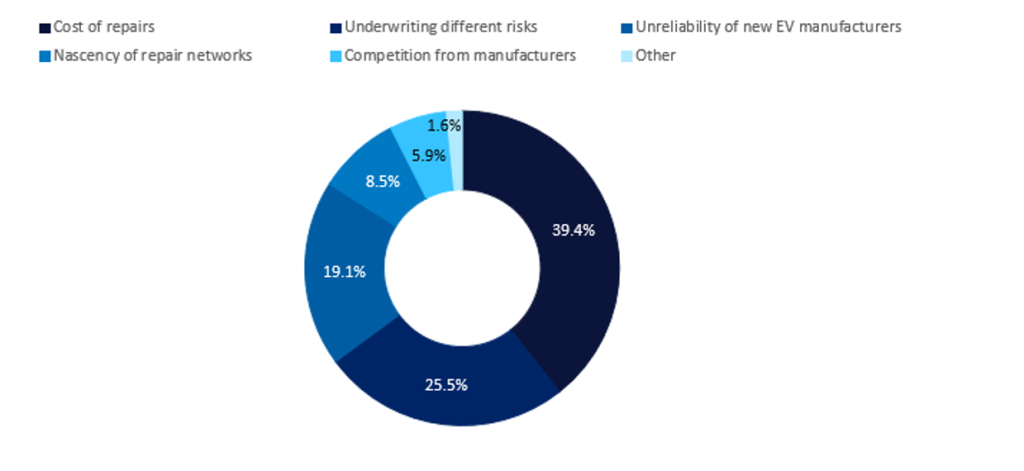
Robotic Process Automation (RPA) can play a critical role in improving back office process efficiency in the insurance sector, where ease, speed and convenience of service – along with price – are key competitive differentiators. Darshan Shah, a senior consultant at global sourcing advisory and consulting firm, Alsbridge, explains why claims management activities are all ideally suited to RPA.
Insurance firms today struggle to manage complex information systems characterized by outdated legacy applications and convoluted business processes. At the same time, they face increasing competitive pressure to be responsive to customer needs.
To address this daunting challenge, many insurers are turning to intelligent software tools that apply rules-based logic and machine learning to execute repetitive tasks and recognize data patterns to dramatically improve the efficiency of critical business processes.
For a variety of reasons, most insurers today manage multiple information systems. Different business units work independently to decide the best systems for their needs.
Mergers and acquisitions often fail to fully consolidate systems, processes and data. Vendors discontinue support for old versions of their systems in order to sell newer versions. New regulations require additional business processes.
Additional data
How well do you really know your competitors?
Access the most comprehensive Company Profiles on the market, powered by GlobalData. Save hours of research. Gain competitive edge.

Thank you!
Your download email will arrive shortly
Not ready to buy yet? Download a free sample
We are confident about the unique quality of our Company Profiles. However, we want you to make the most beneficial decision for your business, so we offer a free sample that you can download by submitting the below form
By GlobalDataAny project involving system changes is designed to better support the business process. However, that project by definition creates additional data and process changes requiring data migration, data validation and maintenance of old systems for data lookup and reconciliation.
Invariably, something gets left out during the discovery stage and is not incorporated in to the to-be design. As a result, situations arise where data needs to be accessed from legacy systems, or a sub section of a process continues to be performed in the older system because the new system can’t accommodate the change.
All of this leads to a complex spaghetti of connections between systems, processes, data and people.
To keep the business running, more and more people are added to perform mundane, repetitive swivel chair jobs.
The cycle perpetuates itself, as manual data entry leads to the hiring of more people to audit and reconcile work done in upstream processes to prevent simple key stroke errors from generating disastrous consequences further downstream. Inefficiency is compounded as companies feed data to their vendors, who now have to monitor their clients as well as their internal systems and processes.
Within the insurance industry, ongoing changes preclude the use of existing management systems to fully automate business processes.
At the same time, customers expect fast and seamless insurance quotes, policy document retrieval and claims processing.
In this environment, a labour-intensive back-office function represents the main hurdle to straight-through processing. To further complicate matters, constant variation in volumes makes it difficult to train and staff to align with demand.
While the traditional solution has been to outsource to a vendor who assumes responsibility of managing staffing levels and meeting business SLAs, today many insurers are turning to intelligent software tools to reduce costs and enhance speed, accuracy and auditability.
Robotic process automation
One area of focus centers on Robotic Process Automation (RPA) applications that execute routine, specifically defined and rule-based functions without human intervention.
Broadly applicable across process types, RPA tools use logic rules to execute routine, specifically defined tasks without human intervention.
The applications interface – rather than integrate – with virtually any application, and as such require minimal disruption of existing IT environments, and can be easily reconfigured to adapt to new regulations or requirements.
Today, most insurers have clearly defined and effective processes and methodologies around quoting, underwriting and claims management. However, because these processes require a high level of manual intervention, effective execution is often lacking, and as a result the customer experience suffers.
Meanwhile, claims management activities such as data entry in multiple systems, claim verification and validation, data preparation for claim adjudication, accounts payable and payment validation are all ideally suited to RPA.
'Smart robots'
Applying RPA to these people-intensive processes can have a dramatic impact. Smart “robots” typically work five to ten times faster than humans, as well as 24 hours per day, 7 days per week without taking vacation, holidays or sick leave.
Depending on the type and volume of robots purchased, the license fees for a RPA “robot” typically range from $5-15K per year per robot, and can take on the workload of 5 to 10 humans. In addition to cost savings and increased speed and productivity, RPA tools can enable more effective governance and regulatory compliance as they create a detailed audit trail, since every step in the process is consistent and documented.
While they can significantly improve back-office operations, RPA tools are limited in the sense that they can’t ‘learn’ from experience; when they confront a situation that doesn’t conform specifically to the rules they’ve been taught, the programs are stymied.
As such, while RPA solutions can process a high percentage of insurance claims – 80 percent or so – the remaining 20 percent of claims comprising exceptions and unusual cases require human intervention and higher handling times.
To further increase auto-adjudication rates, some insurers are turning to more advanced cognitive tools with pattern recognition capabilities that can analyze and convert unstructured data to a standard format fed back to the RPA solution.
For example, an RPA tool will look for a policy number only in a specific location that follows only a specific pattern. A cognitive application, meanwhile, can discern trends and learn from past experience to identify the policy number by scanning an entire document and using a combination of weighted attributes to identify the most likely match for the policy number. In other words, it looks for the policy number in a manner very similar to how a human would.
The capabilities of emerging intelligent software tools allow insurers to focus time and resources on high-value activity of making decisions, improving the quality of the claim management process, reducing the turn-around time of claims and improving customer satisfaction. While insurers are already reaping the benefits of applying RPA tools to basic business processes, the technology is rapidly evolving and constantly creating new opportunities to extend automation further into the enterprise and achieve a new level of business benefits.







